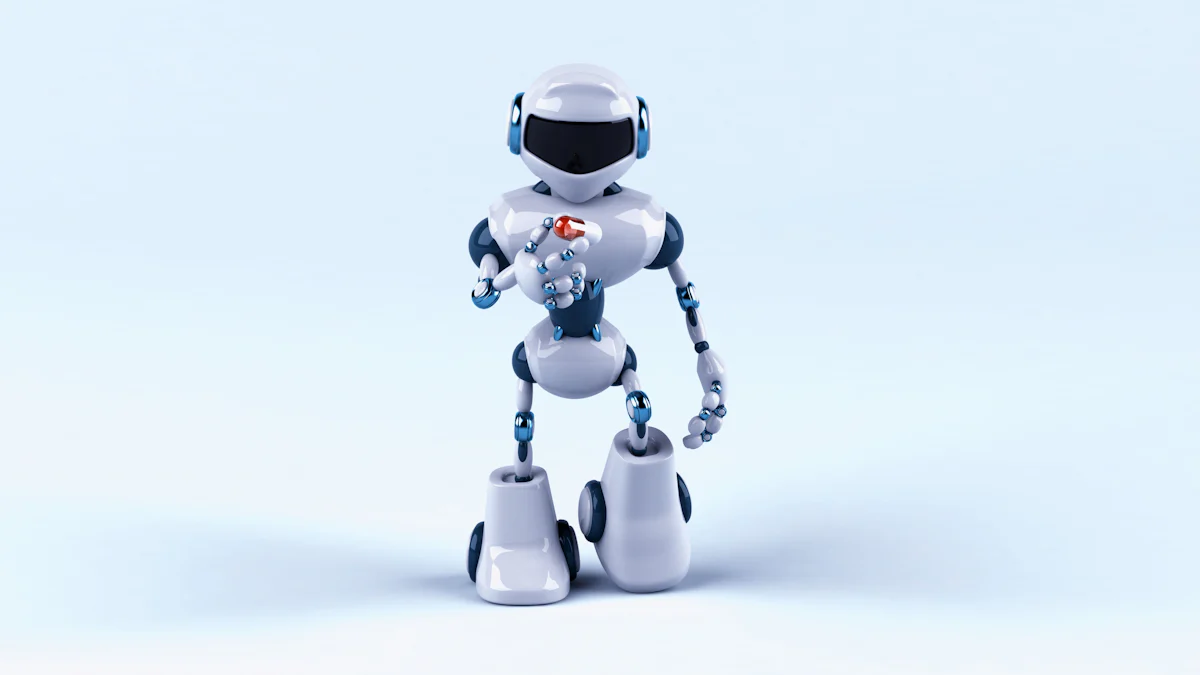Humanoid Robots in Logistics: Bridging the Labor Gap

Humanoid robots are revolutionizing the logistics industry by addressing the critical labor gap. The logistics sector faces a significant shortage of skilled workers, with 76% of businesses experiencing workforce shortages and 37% describing it as high to extreme. This gap poses a serious obstacle to growth, impacting customer service and operational efficiency. By integrating humanoid robots, companies can enhance productivity and streamline operations. These robots offer flexibility and scalability, allowing them to work alongside human workers, thus bridging the labor gap and ensuring continued growth and resilience in the logistics industry.
Understanding Humanoid Robots

Definition and Characteristics
Humanoid robots, designed to resemble human beings in both appearance and behavior, represent a significant advancement in robotics. These machines possess unique attributes that enable them to perform tasks traditionally carried out by humans.
Physical Attributes
Humanoid robots exhibit physical characteristics that mimic the human form. They typically have a head, torso, arms, and legs, allowing them to navigate environments designed for humans. This design facilitates their integration into existing human-centric spaces, such as warehouses and factories. The resemblance to human anatomy enables these robots to perform tasks that require dexterity and precision, such as picking and placing items or operating machinery.
Functional Capabilities
Beyond their physical form, humanoid robots boast advanced functional capabilities. Equipped with sophisticated sensors and manipulators, they can interact seamlessly with human workers. These robots can handle tasks requiring precision and adaptability, making them versatile tools in logistics. Their ability to learn and adapt through AI-enabled "brains" enhances their interaction with humans and the environment, potentially leading to a breakthrough moment in their market adoption.
Evolution and Development
The journey of humanoid robots from conceptual designs to functional machines has been marked by significant milestones in robotics research and development.
Historical Background
The concept of humanoid robots dates back several decades, with early models primarily serving as experimental prototypes. Initial efforts focused on replicating basic human movements and functions. Over time, advancements in technology and engineering have propelled humanoid robots from mere concepts to sophisticated machines capable of performing complex tasks.
Recent Advancements
Recent years have witnessed remarkable strides in humanoid robotics. Researchers have made considerable progress, resulting in robots that can move and perform well-designed tasks efficiently. The integration of AI and robotics has accelerated these advancements, bringing us to the brink of a new era in both science and engineering. This evolution positions humanoid robots as central figures in the future of logistics, where they are expected to work alongside specialized robots to enhance warehouse efficiency and productivity.
The Labor Gap in Logistics
Current Challenges
Workforce Shortages
The logistics industry faces a significant challenge with workforce shortages. Many roles, especially those involving repetitive or labor-intensive tasks, remain unfilled. Despite offering competitive wages, logistics operations struggle to hire and retain frontline workers. The United States alone has 11.3 million unfilled jobs in logistics and supply chain management, while only six million people are registered as unemployed. This shortage has reached critical proportions, impacting the efficiency and effectiveness of logistics operations.
Increasing Demand
The demand for logistics services continues to rise, further exacerbating the labor gap. Logistician jobs are projected to grow by 28% from 2021 to 2031, a rate much faster than the average for all occupations. Additionally, logistics support roles are expected to grow by 18% over the next decade. As operations become more data-driven and technology-enabled, the need for skilled workers increases. However, filling these positions proves challenging, creating a bottleneck in the supply chain.
Impact on Operations
Efficiency Issues
Workforce shortages directly affect operational efficiency in logistics. Companies employing third-party logistics services face considerable challenges due to the lack of skilled labor. Suppliers' on-time delivery rates are falling, exacerbated by supply shortages. The inability to fill open positions hinders the smooth flow of goods, leading to delays and inefficiencies in the supply chain.
Cost Implications
The labor gap also has significant cost implications for logistics companies. The shortage of skilled workers drives up wages, increasing operational costs. Companies must invest in training and development programs to upskill their existing workforce, adding to their expenses. Moreover, the reliance on temporary or less experienced workers can lead to higher error rates and increased costs associated with rectifying mistakes. As a result, businesses face financial strain while trying to maintain service levels and meet customer expectations.
Role of Humanoid Robots in Bridging the Gap

Applications in Logistics
Warehousing
Humanoid robots are transforming warehousing operations by taking on tasks traditionally performed by human workers. These robots can lift and carry items weighing up to 35 pounds, crouch, reach, and place items efficiently. Their ability to navigate human-centric environments makes them ideal for warehouses, where they can work alongside human employees. By handling repetitive tasks, humanoid robots reduce the risk of injury and create additional capacity for logistics companies. This integration allows businesses to optimize their workforce and improve overall productivity.
Transportation
In transportation, humanoid robots play a crucial role in streamlining operations. They assist in loading and unloading goods, ensuring that items are handled with care and precision. Their adaptability allows them to operate in various transportation modes, including trucks and railcars. By working alongside human workers, humanoid robots enhance the efficiency of transportation processes, reducing delays and improving the flow of goods across supply chains.
Benefits of Integration
Increased Efficiency
The integration of humanoid robots into logistics operations leads to significant efficiency gains. These robots perform tasks with precision and consistency, minimizing errors and enhancing the speed of operations. By automating repetitive tasks, humanoid robots free up human workers to focus on more complex and strategic activities. This shift results in a more efficient allocation of resources, enabling companies to meet increasing demand and maintain high service levels.
Cost Reduction
Humanoid robots contribute to cost reduction in logistics by lowering labor expenses and minimizing operational disruptions. Their ability to work tirelessly without breaks reduces the need for overtime and temporary staffing. Additionally, the precision and reliability of humanoid robots decrease error rates, reducing costs associated with rectifying mistakes. Over time, these savings contribute to a more sustainable and profitable logistics operation.
Challenges and Considerations
Technical Limitations
Despite their potential, humanoid robots face technical limitations that must be addressed. Their current capabilities may not match the versatility and adaptability of human workers in all scenarios. For instance, while they excel in repetitive tasks, they may struggle with complex problem-solving or tasks requiring nuanced human judgment. Continuous advancements in robotics and AI are necessary to overcome these limitations and fully realize the potential of humanoid robots in logistics.
Ethical Concerns
The deployment of humanoid robots raises ethical concerns that require careful consideration. The potential displacement of human workers is a significant issue, as companies must balance automation with job preservation. Ensuring that humanoid robots complement rather than replace human workers is crucial for maintaining workforce morale and social responsibility. Additionally, companies must address privacy and security concerns related to the use of advanced robotics in logistics operations.
Humanoid robots have emerged as a transformative force in logistics, addressing the labor gap with their advanced capabilities. They enhance efficiency and reduce costs, offering businesses a competitive edge. Companies should consider integrating these robots to optimize operations and meet growing demands. However, ethical considerations must guide this integration. Businesses should ensure that robots complement human workers, preserving jobs and fostering collaboration. The future of logistics will likely see humanoid robots playing a pivotal role, balancing technological advancement with ethical responsibility.
See Also
Enhancing Warehouse Efficiency with Robotic Automation Demystified
Boosting Warehouse Productivity through Logistics Robotics Power
Unveiling the Potential of AI in Logistics Innovation
Maximizing High-Tech Manufacturing Warehouse Benefits with Automation
Uncovering the Supply Chain Revolution through Robotics Exploration
